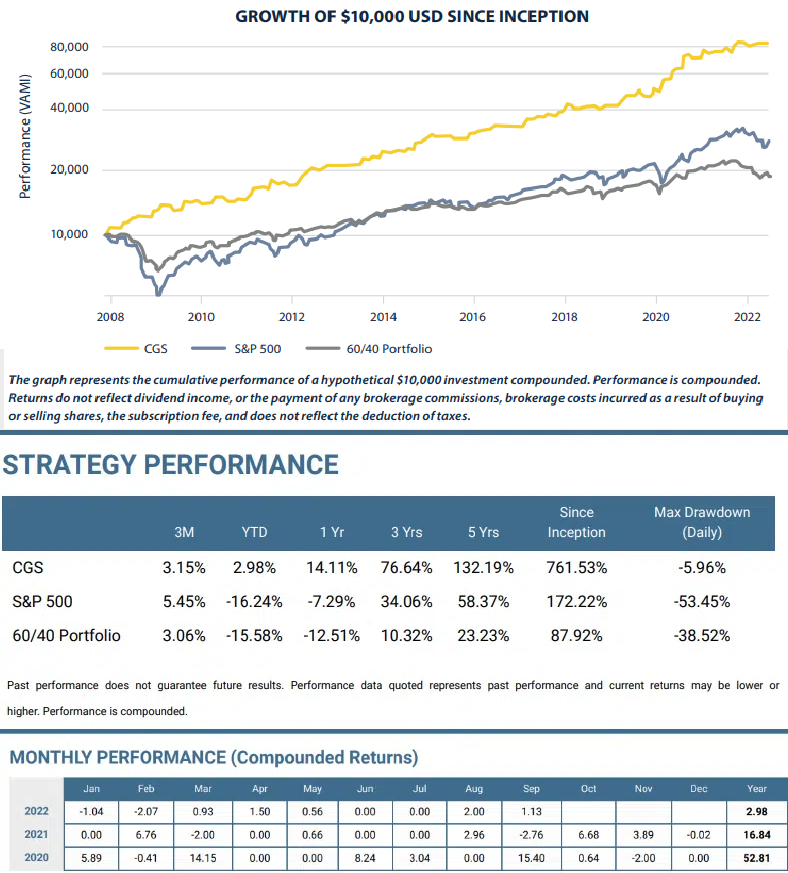Your Trading Losses Explained, And How To Turn It Into Profits
The past two years have been nothing short of extreme in terms of price swings for all types of investments and our resulting emotions. Traders and investors have been tangled up in the perfect storm to lose a record amount of money in 2023.
While I follow and greatly appreciate Ray Dalio and his principles, it has always blown my mind that his All-Weather portfolio does what every other portfolio does – holding stocks and bonds and riding out any market gyrations. His stance was “Cash Is Trash,” but I have never thought that. Cash, in fact, is one of the most powerful positions to have in certain market conditions and one I have embraced more so than others in the past year.
Here’s a simple question for you.
If the stock market and bonds were both falling in value, would you:
1. Hold both and ride them lower and be down roughly 22% this year?
2. Sell all positions, move to cash, and buy assets rising and have a gain of 2.89% this year?
Well, there is some good news. Ray Dalio finally came around to my “Cash Is King” belief after his All-Weather portfolio continued to lose value for its investors. I’ll touch more on this position later, which, if you don’t embrace at some point, you will likely regret that decision.
I recently wrote about the big losses coming in the article Worst Case Financial Scenario for Retired or Nearly Retired Investors where I stated:
“The bottom line here is that the worst thing that could happen to most investors and capital in the markets now would be a multi-year bear market and drawdown, which would cripple anyone nearing retirement and those retired.
Having your nest egg cut in half will send shockwaves worldwide to the largest group of investors, the baby boomers, and anyone retired. In addition, it will likely create a flood of people looking for jobs to subsidize their retirement and crush many dreams, and that’s just the beginning of potentially a big unraveling of the economy.”

The Silent Killer – Your Emotions
Just this year alone, there have been enough wild price swings with stocks and bonds to spark emotions and catch most investors off guard – like a deer in the headlights, just before its lights out and game over. This year, we all see fear among market participants because almost every asset is falling in value.
First, the start of 2022 was the worst six-month start in 50 years for US equities. Right after that, we have the best start to a quarter since 1983. If the worst start to a year and the best start to a quarter don’t spark emotions, then I don’t know what will. Talk about mixed signals for everyone to try and figure out what to do. If you don’t have a game plan and proven strategy going forward, I wish you the best of luck.

The cost of emotional trading and investing decisions goes much deeper than sleepless nights. Thinking about delaying or downgrading your retirement plans adds an enormous amount of stress and can actually become dangerous to your health.
The emotional rollercoaster ride from falling stock and bond prices has been proven to cause health issues. For example, during the 2008 bear market, more than 10,000 suicides were tied to the economic crisis between 2008 – 2010. Watching your life savings vanish and your financial situation worsen month after month is no joke. Significant contributors are job loss, home foreclosures, and debt during recessions. While bear markets are very rare, they are a serious event that must be prepared for avoided with your investment capital.
The good news is that there are ways to avoid bear markets altogether and even profit from falling prices and eroding economic conditions. An individual investor who follows my research and trade signals said this:
“Chris,
Thank you. You have summed up the whole mental game of this crazy market. Been a TTT member coming up on 2 years now.
I am so glad that you have shared your thoughts, expertise, and advice, and I appreciate your ability to see the big picture and share how by not jumping into the fray, we can consistently grow our profits and escape the brutal bear market movements.
I still have a long way to go – I do get frustrated when things go up, and I am not in there sometimes, but I see the returns of BAN and CGS over the years, and it is just amazing how by stepping aside when the crazy volatility and trend exit comes, how one can be at peace knowing their nest egg is safe.
Additionally, during these times, we can do those things we really want to do instead of staring at screens all day. :)” A.L
Is Your Money Disappearing? Status Quo Investing Has Always Been Broken
How much money are you losing doing nothing but sitting on your hands and hoping stocks and bonds start to rise again? Well, if you are like 99% of investors, you know long-term treasury bonds are down over 40% from their 2020 high, and the S&P 500 index has fallen over 25%. No matter what stock/bond portfolio allocation you are sitting with, you are taking a beating.
Its been my mission/goal for over 25 years to trade and invest my hard-earned money in a better way than doing what everyone else does, buy-and-hold. Sure, it works well during bull markets and for young investors, but once you pass the age of 40, shifting to tactical investing is hands down the way to build and preserve your wealth.
The primary goal of every investor should be to preserve capital. You cannot prioritize a short-term battle over a long-term war. Without your capital, you have no means to access the upside potential that is offered by tactical investing.
To preserve your capital, investors must:
- Cut losses and not hold on to positions falling in value.
- Own fewer positions to reduce costs and generate market-beating returns.
- Wait for quality trends and positions to present themselves.
- Use cash as one of the most powerful positions during specific market conditions (extreme volatility, mixed bull/bear markets).
The New Status Quo Investing Method
My 25+ years of research on this, supported by my strategy results, have proven we can reduce losses and drawdowns and generate above-average returns in a way you likely never thought possible.
You see, I believe following the price charts is the key to reliable investment returns. Price does not lie; the only way we, as traders, make money is if the price of an asset moves in our favor.
During the 2001 bear market, I thought that by owning stocks, because of positive fundamentals and news, my investments would rise in value. Boy, was I wrong! Even stocks that had been growing quarter after quarter got decimated, and I blew up my investing account. I am now 100% certain that following price using technical analysis and position/risk management is how you can best grow your trading account. Sure, fundamental economic data and news will move asset prices, but any move they cause is typically a short-lived price blip on the chart and favors the underlying technical trends. Put simply, I learned the hard way to ignore random noise and other market opinions and follow price.
Taking things one step further, I have created a hierarchy of assets to know when and what to invest in at any given time – no matter if the markets are trading up, down, or chopping sideways. The USA stock indexes are #1; if they are not in favor, I look to long-term treasury bonds. If they are not in favor, I look to the US dollar index UUP and UDN. If nothing there is favorable, I earn interest with the short-term T-Bill ETF or cash in my brokerage account and sidestep the chaos completely. There is a white paper that covers this in more detail on how to build a bear-proof portfolio here.

The key here is that we only hold assets that are rising in value and exit things moving sideways or falling. Also, as volatility increases, each of these assets have reduced volatility to help decrease risk from that standpoint.
New Status Quo Investing – Only Owning Assets Rising In Value
You may be saying, well, this is all great, but how am I supposed to do this with my portfolio?
The straight-up answer is you can follow my exact portfolio trades and allocations. And to take things one step further, you can have these ETF trades autotraded in your self-directed brokerage account, so you can spend your time enjoying life or building your business as an entrepreneur.
The results below show what technical investing and knowing what to own and when to sit in cash can do for you.

Concluding Thoughts:
In short, I have packed a lot of information here with some great links for more education on what to do and why you must ensure you avoid further losses. Based on technical analysis, it looks like this is just the beginning of much lower stock and bond prices.
I recently talked to an investor who said, “I’m stuck, because I’m down so much already.” I get that point of view and feeling because I have been there. In fact, I blew up three trading/investment accounts in my lifetime to learn what needs to be done and, more importantly, what not to do. As we age, we cannot afford multi-year drawdowns, and we definitely do not want to lose more of our hard-earned money.
While it’s a tough pill to swallow and taking a loss on a portfolio is not easy, I know from experience that it’s much better to exit a losing trade when it’s clearly not working (and is down 15-25%) than is it is to hold on for dear life. Doing this can land you in a scenario where you will watch your portfolio fall another 20-40%, and then you’ll have to wait 3-10 years to get back to breakeven.
Moving money to cash and then into a new asset rising in value is better than doing nothing and having to live with the emotional and financial consequences that will come with it.
I hope this article has helped you in some way. My team and I are here to help!
Sign up for my free trading newsletter, so you don’t miss the next opportunity!
Chris Vermeulen
Chief Investment Officer
www.TheTechnicalTraders.com

